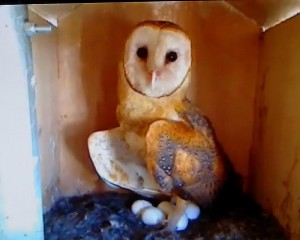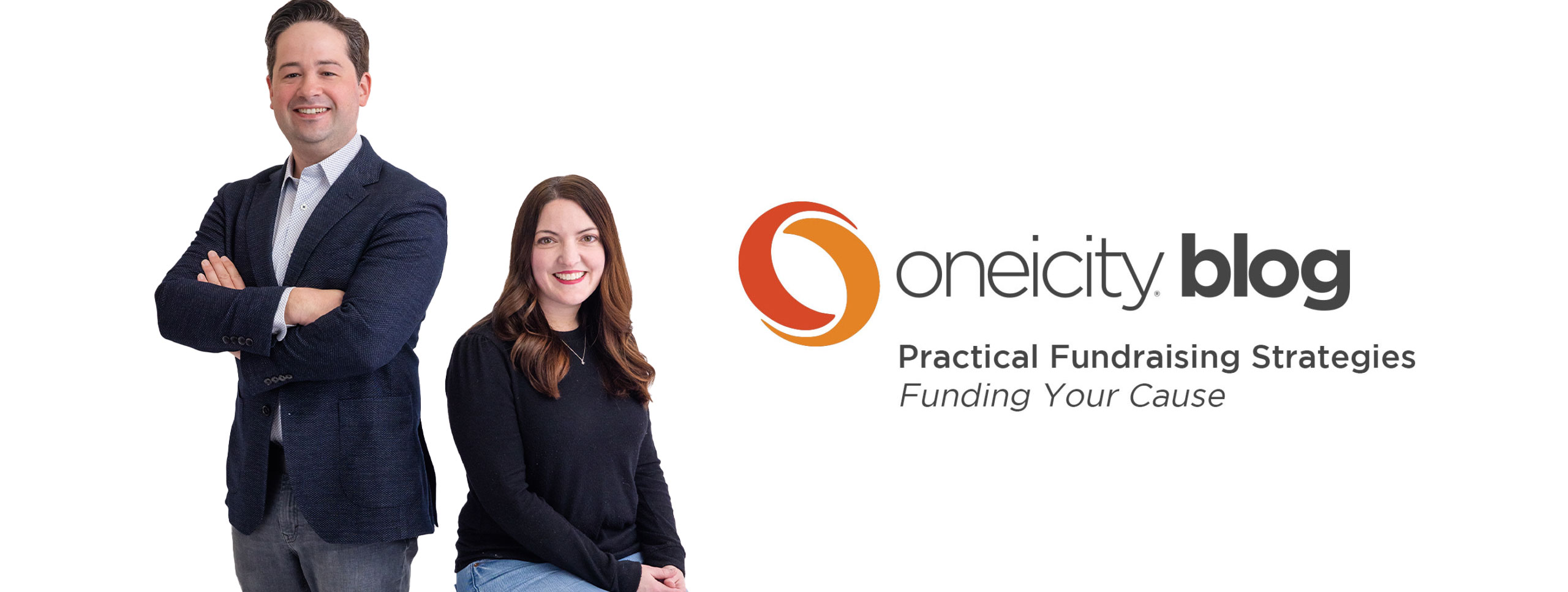Today’s thinking about nonprofits and their donors is influenced by Molly the barn owl. If you’ve missed out, Molly is a new mom owl living live on the web. Technically she’s in a webcam equipped nest box on a pole in San Marcos, California. Molly and McGee (her doting mate) are proud parents. At this moment they have four eggs and one baby (named Max).
Our office has a huge monitor in the main room and Molly has been on screen for 5 days now.  We’re talking nearly 24/7 streaming of a barn owl sitting on her nest (and eating the occasional field mouse, mole or even rabbit). Sometimes she’s in a small window because that monitor is in use for work, but much of the time she’s taking up all of the real estate. As I write, there are 15,000+ viewers of the live video feed. Around 1PM Pacific time each day, Carlos and Donna Royal (Molly’s spokespeople) come on and give commentary, answer questions and update everyone on the events from the previous 24 hours.
We’re talking nearly 24/7 streaming of a barn owl sitting on her nest (and eating the occasional field mouse, mole or even rabbit). Sometimes she’s in a small window because that monitor is in use for work, but much of the time she’s taking up all of the real estate. As I write, there are 15,000+ viewers of the live video feed. Around 1PM Pacific time each day, Carlos and Donna Royal (Molly’s spokespeople) come on and give commentary, answer questions and update everyone on the events from the previous 24 hours.
In scrolling through the comments on the site I was amazed at the worldwide community that has grown around Molly.
Every comment imaginable (and more) are on the feed:
Discussions about owl mating habits (sounded pretty PG13 to me)
Concerns that the Royals are holding Molly captive (they aren’t-whew!)
Speculation about owl mating for life (turns out to be a bit complicated)
And questions like:
“What the heck is she eating?”
“Where does she poop?”
“What does she feed the babies?”
“How can I get an owl?”
“Does she ever leave?”
“Why is she eating that egg?” (There was a tragedy involving one of Max’s unborn siblings that we won’t talk about here).
On and on and on…
Here’s what Molly is teaching me.
Donors want an experience (even a virtual one). As weird as it sounds, Hoots and I are connected to Molly and to the Royals. I was on a conference call this morning and Hoots steered my talking and pacing so I could see that Max was flapping (and flopping) around in the nest. Awww, our little guy is growing up so quickly. Candidly, it is addictive.
Donors want to connect with your work through experiences. They need the experience to process the emotion of your work. Telling people to “give” won’t connect with the emotions that drive donations the way that experiencing and seeing your work will.
Continuing to tell, rather than creating experiences, is surefire way to kill your income.
If you work in Africa, take them to Africa (literally or metaphorically).
If you work with people who live on the streets, let your donors experience life on the streets.
If you work with orphans who struggle to find a place to stay, help your donors “see” what kinds of choices they face.
Whatever you do, your donors are hungry to experience something connected to your mission.
Donors are not content to be told they should give. Donors gravitate toward the work they can see, hear, smell and touch.
How do you do that? Trips. Volunteering. Video testimonies. Webpages devoted to experience.
So. Good job Molly (and the Royals).
What do you think? How important is an experience for donors? What kinds of experiences can you provide your donors?
I’d love to hear what you think about Molly and donor experience.

Steve Thomas
Partner, Oneicity
(photo credit: Carlos Royal)
